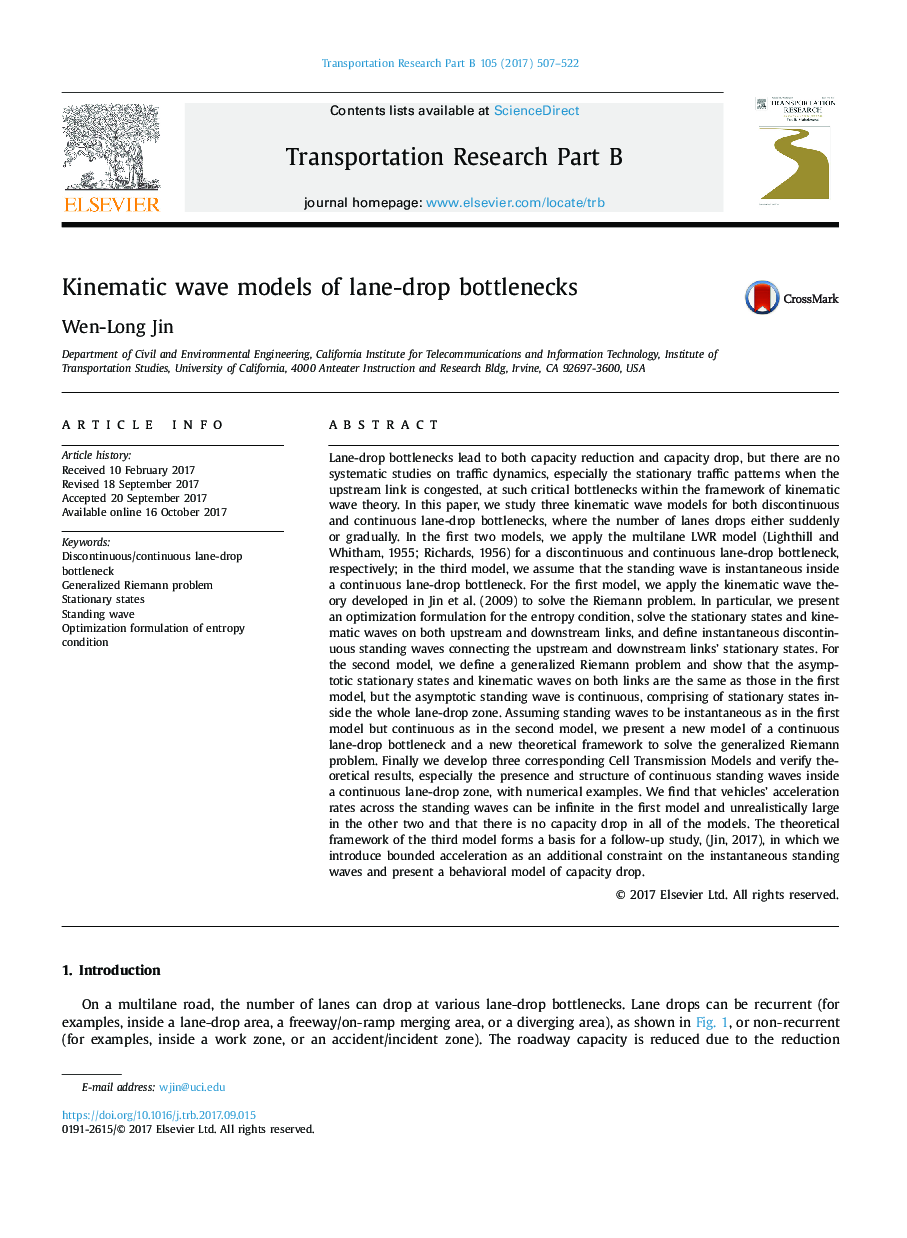| کد مقاله | کد نشریه | سال انتشار | مقاله انگلیسی | نسخه تمام متن |
|---|---|---|---|---|
| 5126929 | 1488941 | 2017 | 16 صفحه PDF | دانلود رایگان |

- Study three kinematic wave models for lane-drop bottlenecks.
- Present analytical solutions and standing waves for discontinuous lane-drop bottlenecks.
- Define continuous standing waves with stationary states in continuous lane-drop zones.
- Present a new theoretical framework with instantaneous continuous standing waves.
- Present three Cell Transmission Models and verify theoretical results. Three models cannot capture capacity drop and have unrealistic acceleration behaviors.
Lane-drop bottlenecks lead to both capacity reduction and capacity drop, but there are no systematic studies on traffic dynamics, especially the stationary traffic patterns when the upstream link is congested, at such critical bottlenecks within the framework of kinematic wave theory. In this paper, we study three kinematic wave models for both discontinuous and continuous lane-drop bottlenecks, where the number of lanes drops either suddenly or gradually. In the first two models, we apply the multilane LWR model (Lighthill and Whitham, 1955; Richards, 1956) for a discontinuous and continuous lane-drop bottleneck, respectively; in the third model, we assume that the standing wave is instantaneous inside a continuous lane-drop bottleneck. For the first model, we apply the kinematic wave theory developed in Jin et al. (2009) to solve the Riemann problem. In particular, we present an optimization formulation for the entropy condition, solve the stationary states and kinematic waves on both upstream and downstream links, and define instantaneous discontinuous standing waves connecting the upstream and downstream links' stationary states. For the second model, we define a generalized Riemann problem and show that the asymptotic stationary states and kinematic waves on both links are the same as those in the first model, but the asymptotic standing wave is continuous, comprising of stationary states inside the whole lane-drop zone. Assuming standing waves to be instantaneous as in the first model but continuous as in the second model, we present a new model of a continuous lane-drop bottleneck and a new theoretical framework to solve the generalized Riemann problem. Finally we develop three corresponding Cell Transmission Models and verify theoretical results, especially the presence and structure of continuous standing waves inside a continuous lane-drop zone, with numerical examples. We find that vehicles' acceleration rates across the standing waves can be infinite in the first model and unrealistically large in the other two and that there is no capacity drop in all of the models. The theoretical framework of the third model forms a basis for a follow-up study, (Jin, 2017), in which we introduce bounded acceleration as an additional constraint on the instantaneous standing waves and present a behavioral model of capacity drop.
Journal: Transportation Research Part B: Methodological - Volume 105, November 2017, Pages 507-522